7 Organic Pesticides and their Uses
Do you want to be an organic gardener and avoid putting chemicals in your garden?
Most of us set out to do just that. But what happens when you see pests munching on your crops? Do you ignore them? Look up a homemade “organic” pesticide? Purchase one from the store? Or are you tempted to throw in the towel and find the strongest pesticide on the home market?
We all want a healthy garden but are faced with those questions when insects come to our gardens. It always helps to talk to successful organic gardeners and ask what works. But I wanted to go a step further.
In this post and episode of the Beginner’s Garden Podcast, I asked Joe Lamp’l about not only his personal practices but also which organic pesticides he recommends and how to use them.
You might have already heard my interviews with Joe about tomato troubleshooting, irrigation best practices, and organic fertilizer options. He is also the host of the Joe Gardener Show and Growing a Greener World on PBS.
Click below or continue reading for our discussion.
*links below contain affiliate links; as an Amazon Associate, I earn a commission from qualifying purchases.
Avoiding the Need for Pesticides
As an organic gardener, I want to avoid using any pesticides, even those that are organic. So there are ways that I can prepare my garden so that it doesn’t attract as many unwanted pests.
A healthier plant will not be as attractive to pests; plus, it will be able to withstand an attack better than an unhealthy one. Therefore, focusing on soil nutrients and all-around health of the crops in your garden is the first step.
Second, walk your garden daily when possible. The sooner you catch a problem, the easier it will be to correct.
A third option, once you know which pests attack which crop, is to cover the crop before those pests arrive with a fabric like tulle. If you use these floating row covers to protect eggplant from flea beetles like Joe does (or to protect squash plants from the squash vine borer or cucumbers from the cucumber beetles), be sure to take the cover when flowers start to form since pollinators need access to those flowers for pollination.
Pest Identification
When you start to see insects on your plants, it is important to properly identify them before you act. First, you need to make sure it’s a pest insect. Only 3% of the insects in our gardens are actually harmful, which means that 97% of the insects we find are beneficial or neutral. When you know what pests you’re dealing with, you can use the right type of pesticide for that type of insect.
To be able to properly identify insects, you want the right resources. There are great groups on Facebook, like Insect Identification. For a handy guide, consider Garden Insects of North America, which includes information gathered from around the continent on every stage of life of the insects it includes. A third resource is bugguide.net.
When to Use Pesticides
We know that there will be some damage but if we’re patient and wait for the beneficial insects they will take care of the pests. Often, our attempts with pesticides will actually make our pest problem worse.
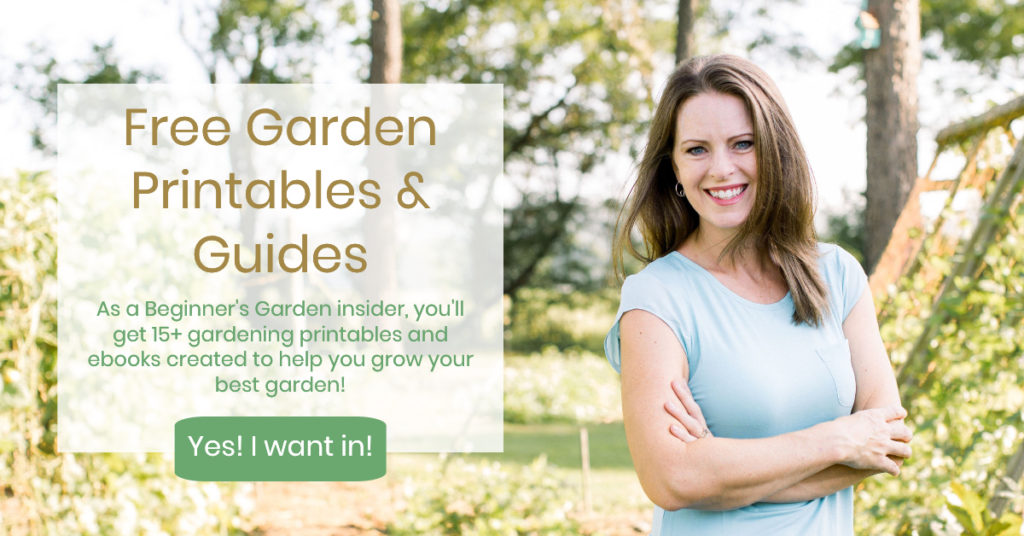
Organic Pesticide Options
Organic pesticides can still kill beneficial insects and don’t necessarily make the pests insects go away. (In fact, many experts believe that pest insect populations bounce back much quicker than beneficial insect populations after applications of pesticide.)
Organic pesticides aren’t always the answer here. This collateral damage occurs with or without synthetic chemicals. Even when we choose organic, we should use them in moderation.
Understanding the risks in even organic pesticide options, you still may have to resort to using them from time to time. Here is a list of common organic pesticides and their uses:
Insecticidal Soap
Insecticidal soap can be purchased (this one is a good option) or made at home. Insecticidal soap is one of the better options for soft-bodied insects like aphids. However, if not mixed correctly, it can potentially burn your plant’s leaves. (Always test first!)
Also, keep in mind, insecticidal soap will kill any soft-bodied insects it contacts, like the beneficial larvae of ladybugs, syrphid flies, and lacewings.
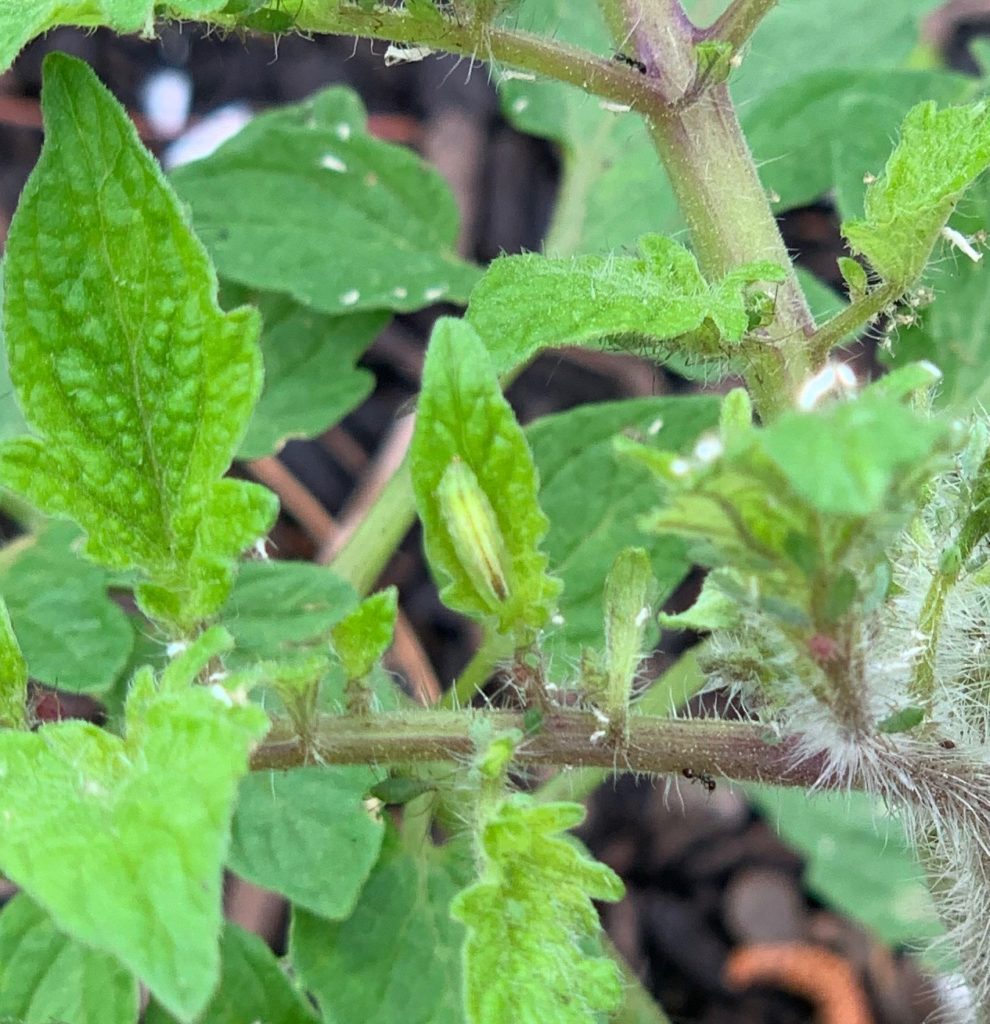
With a careful eye to just apply on the insect pests, insecticidal soap is effective with aphids, bean beetle larvae, and young squash bugs (while they are still soft-bodied).
BT
BT stands for bacillus thuringiensis and is a bacteria that kills the pests that ingest it. It is one of the few selective control pesticides that target the larvae of pests without harming most of the beneficial insects, though make sure you do not use it around monarch caterpillars. It comes in a powder or a liquid that can be applied as needed.
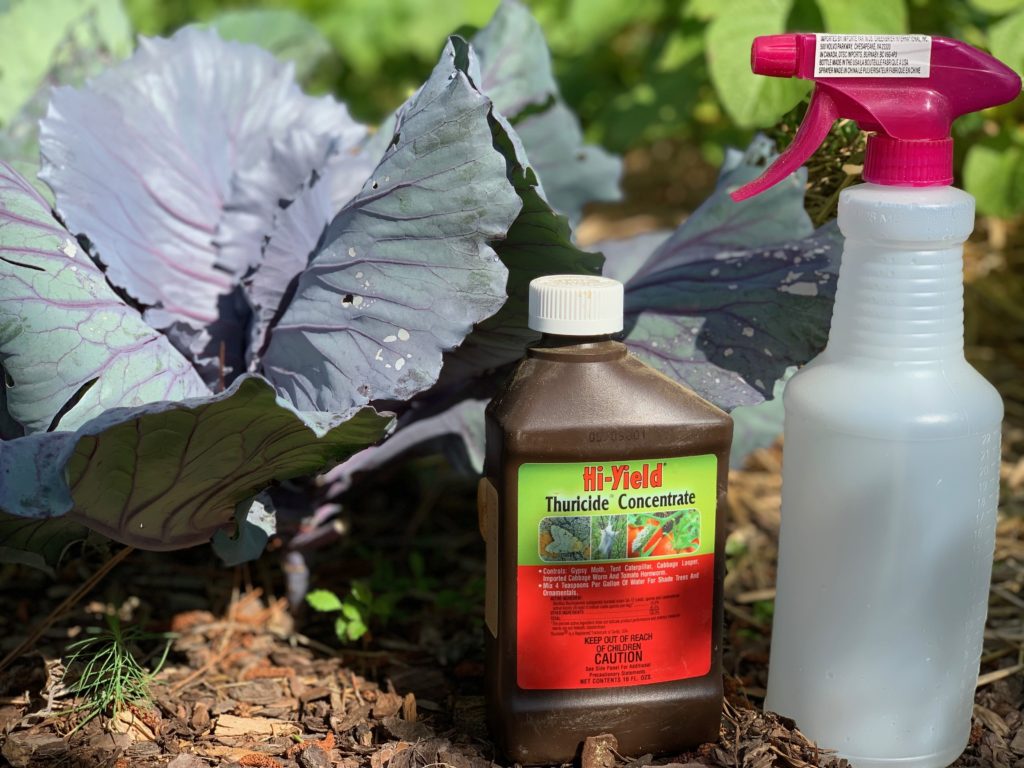
BT is effective on some of the most common worms in your garden like the cabbage worm, armyworms, and the tomato hornworm, among others. Apply this spray directly on the plant the worm is eating.
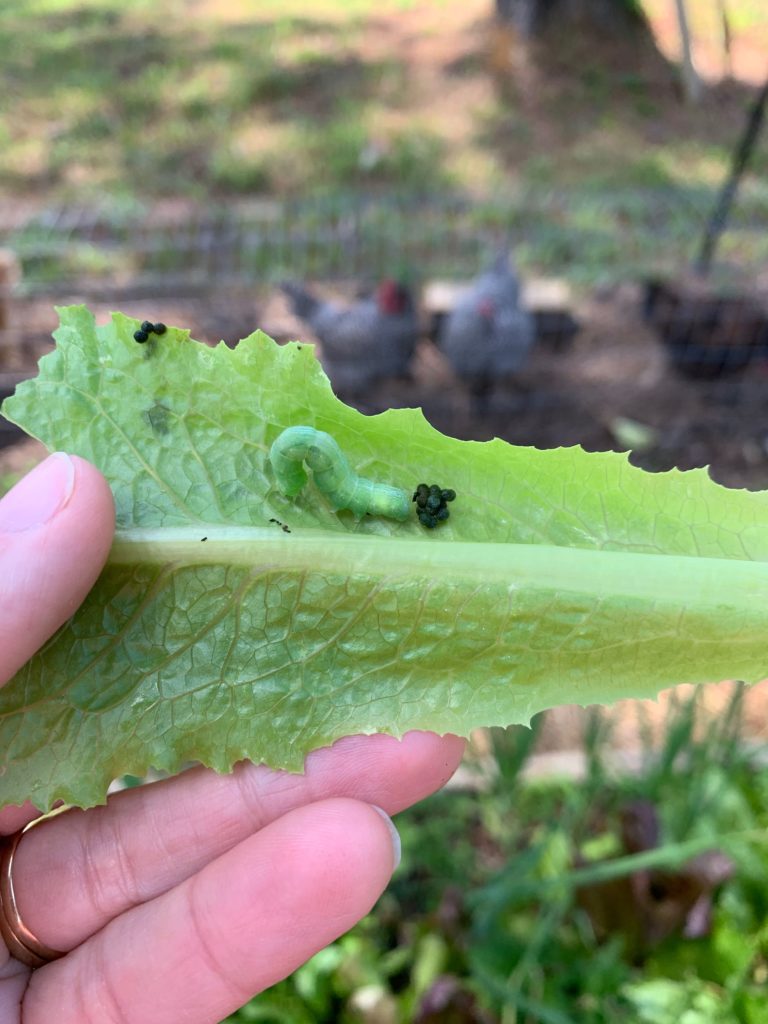
Neem Oil
Neem oil is a repellant and is also effective against soft-bodied insects; simply, it smothers them. It comes from a tree in India and is one of the most effective botanical pesticides. But like insecticidal soap, it can kill the larvae of your beneficial insects, so use with caution.
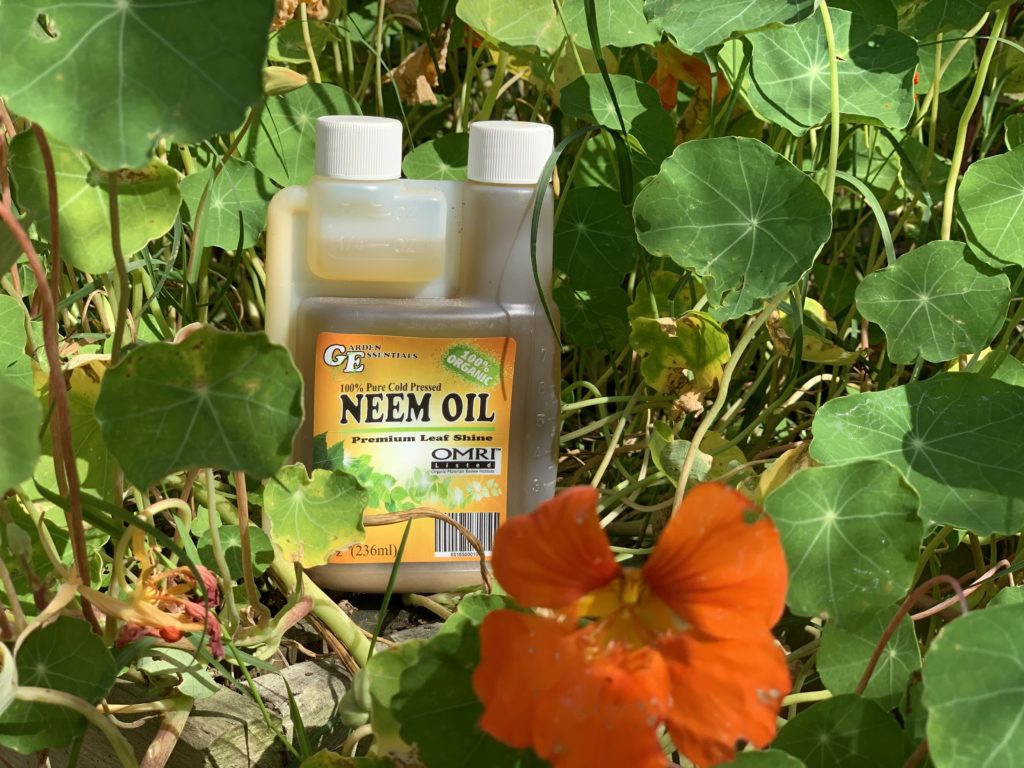
Also, be cautious about “neem oil blends” because they may not be organic and can contain synthetic pesticides. You’re looking for 100% cold-pressed neem oil when you purchase.
Diatomaceous Earth
Diatomaceous Earth is ground up fossilized diatoms that to an insect feels like tiny shards of glass. DE kills soft-bodied insects, like snails and slugs, by cutting them and they lose their body fluids.
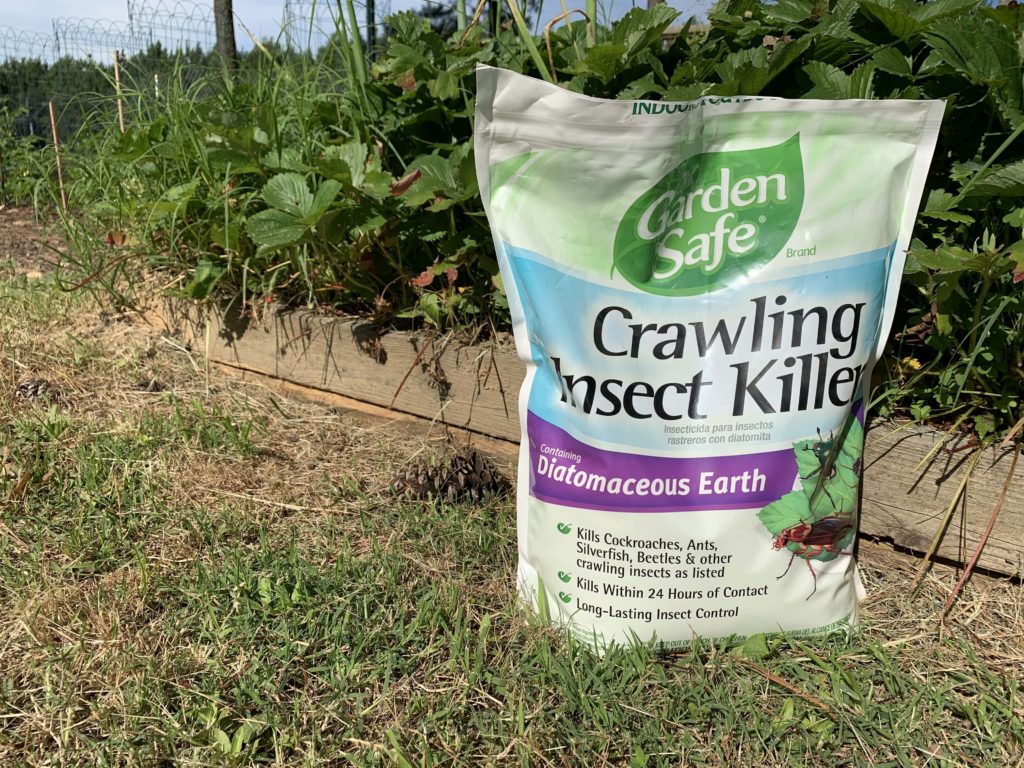
Generally, DE is safe, but keep it away from flowers where bees and other pollinators could visit. You will also have to re-apply after a rain.
Horticultural Oil
Horticultural Oil is similar to Neem Oil in that it will cover and suffocate insects. You sometimes hear about it recommended as an alternative to insecticidal soap. It’s probably best to use against a scale infestation because they are so difficult to get rid of. As with any pesticide, make sure that you read the directions about how and when to apply it, as it is stronger than insecticidal soap.
Kaolin Clay
Kaolin Clay is a fine powder used to make china. (It’s also most known for using in natural skincare.) When it is dusted onto leaf surfaces (or mixed with diluted with water and a drop or two of pure soap and sprayed on leaves), it disguises the surface from pests. Although I haven’t used it myself yet, from what I hear it’s a natural repellant because insects (like beetles) don’t like walking through it. Though it is messy to work with and needs to be used properly, many organic gardeners use it to prevent pest damage. Click here to learn how to apply kaolin clay to your garden crops.
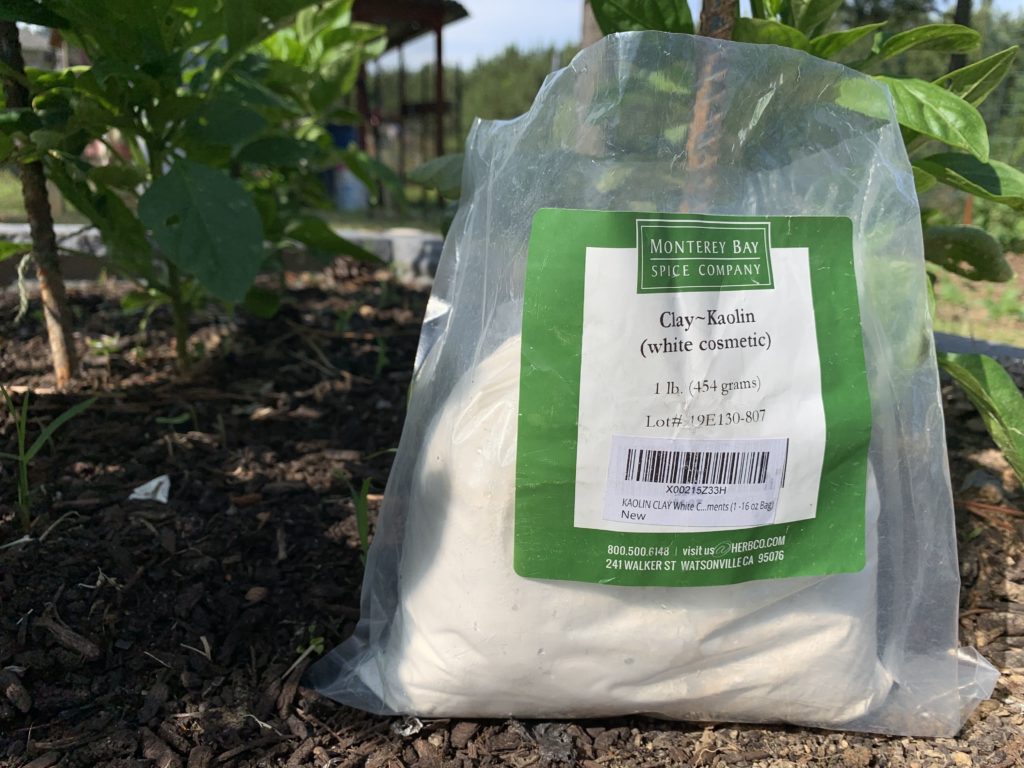
Pyrethrin
Pyrethrin is derived from a chrysanthemum flower. While it is organic, it is a broad-spectrum pest control that kills everything it touches on contact. This is a “last-resort” organic pesticide since it isn’t selective and can kill beneficial insects. I’ve never used it in my garden; if you do, be sure and read the label and apply judiciously.
Bottom Line
Many organic gardeners have noticed that over time, as you are careful with how you use pesticides, the beneficial insects will come and build your garden environment so that you will have a healthier garden all around.
As Joe and I both shared in this conversation, we rarely use anything besides the occasional application of Insecticidal Soap and BT. By increasing your tolerance, hand-picking, using barrier methods like row covers, and accepting that you may have to surrender sometimes, you can be well on your way to an organic garden.
But if the time comes when you need to step in to save your plants, hopefully, this list will help you know when and how to apply these common organic pesticides.
Avoid Common Beginning Gardening Mistakes

Grab this free download and not only discover some of the most common mistakes first-time gardeners make -- but even more important -- learn what to do to avoid those mistakes altogether!
Plus, I'll send you my "In the Garden E-mail" on Fridays, periodic updates on garden resources relevant to you, and get access to my entire bank of free garden downloads!
You are also agreeing to our privacy policy.


wonderfull. Thank you for this very valuable information. I think it needs to be practiced organic pesticides for plants